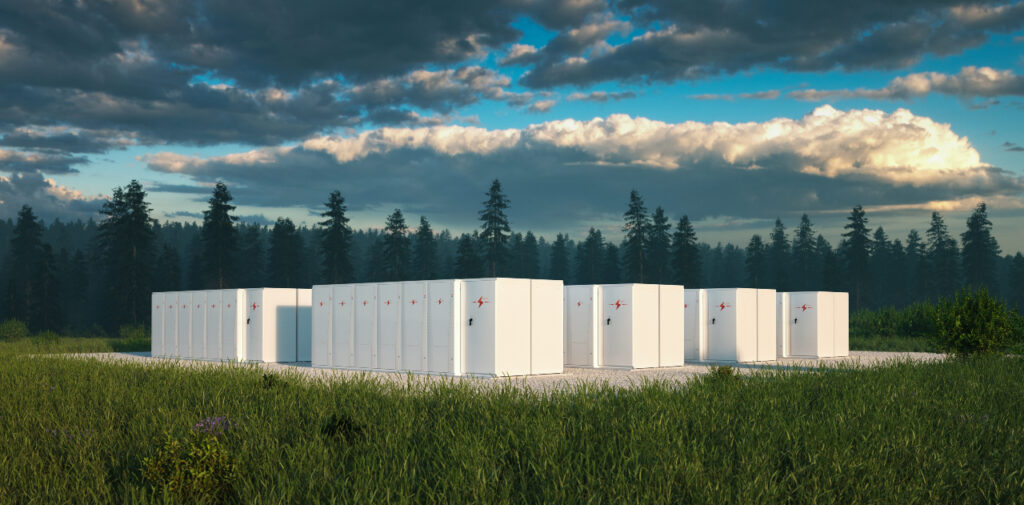This article is a follow up to “Energy Storage: What It is and How It Can Help Your Company”. Click here to read.
We’ve written about what energy storage is and the ways it can benefit your business and/or facility. Now, it’s time to take a look at how energy storage deployment is growing in 2021. A lot has happened in the past year, with the pandemic and the election of a new administration to the White House. How will both those factors impact energy storage (and your company)? Read on to find out!
Has the Pandemic Impacted Energy Storage Deployment?
In short: Yes. Energy storage deployment was negatively impacted by the COVID-19 pandemic. The Energy Storage Association (ESA) surveyed industry stakeholders in April of 2020 and the results revealed major impacts to the industry. The surveys showed a significant slowdown in storage deployment after the onset of the pandemic, due primarily to cancelled shipments of project components; travel restrictions on personnel that hindered project site visits; ceasing direct customer contact; closed government permitting agencies; and reduced demand from end users.
That said, Kelly Speakes-Backman, CEO of the ESA noted that, “We still anticipate year-over-year growth [of energy storage].” That growth is becoming apparent now that COVID-19 restrictions are lessening due to the success of vaccine rollouts.
Recent Energy Storage Growth
So far this year, energy storage deployment has been booming. In Europe, the cumulative electrochemical energy storage installation capacity has gone past the 5GWh mark and this year is likely to see installations almost double from 2020’s figures. 3,000MWh of installations is expected to be completed in 2021, driven forward by national targets and commitments to renewable energy as well as the opening up of opportunities across various grid services markets. Overall, there has been continuous growth in the number of installations and installed capacity in Europe since 2016, and that trend looks set to continue in 2021, with countries strengthening their renewable energy commitments as they work toward 2030 targets.
Meanwhile, on the other side of the pond, analysis firm Wood Mackenzie Power & Renewables found that in 2020, the US industry brought online about 1,464MW / 3,487MWh of new energy storage, more than was deployed in the six preceding years put together. A record 476 MW of storage was deployed in the third quarter of 2020, which marked a 240 percent increase over the previous high. Although the increases were across the board, the biggest rise was attributed to front-of-the-meter (FTM) storage procurements. Massive systems deployed in California drove the record growth. Despite the aforementioned COVID-19 related effects, the ESA believes that energy storage is poised to continue this upward trajectory with unprecedented increases in the coming months.
In addition, the US Department of Energy has published its first comprehensive energy storage strategy, which includes cost and performance targets to be met with a goal to establish the US as a leader in energy storage.
Energy Storage Deployment and the Biden Administration
Under the Biden Administration’s leadership, the outlook for energy storage deployment is promising. The ESA’s top policy recommendations for Congress and the Biden Administration include the creation of a stand-alone energy storage ITC with a direct-pay option. Similarly, the Solar Energy Industries Association’s 100-Day Agenda for the Biden Administration includes the creation of an ITC for energy storage amongst its top legislative goals.
With the recent introduction of the American Jobs Plan bill, President Biden proposed a 10-year extension and phase down of an expanded, direct-pay ITC and PTC for clean energy generation and storage. The introduction of bipartisan bills to extend ITC to stand-alone energy storage is an encouraging development.
Additionally, Biden’s energy policy sets a goal of reducing the carbon footprint of the U.S. building stock 50% by 2035. Energy storage, which makes renewable energy sources more viable, may be one of the keys to achieving Biden’s emissions goal. (Especially since the continuous fall in battery storage prices will likely make renewable energy combined with energy storage increasingly cost-competitive with fossil fuels, according to McKinsey’s Global Energy Perspective 2021.)
How EnergyWatch Can Help with Energy Storage Projects
If you have invested in an energy storage project, especially one that includes on-site generation, acquiring data on the project’s efficacy is important. With EnergyWatch’s energy management platform, WatchWire, you will have: full visibility into the generation and storage levels, allowing you to analyze against your current usage and demand; peak load alerts that make it possible for you to know when to initiate your energy storage use to limit your demand from the grid; and analysis of your energy storage project with measurement & verification, allowing you to determine how effective your project has been in improving operations at your company. To learn more about how WatchWire can help in your energy storage projects, download the full solution brief.
Sources:
https://www.nortonrosefulbright.com/en-us/knowledge/publications/1a7a8794/energy-storage-updater
https://www.jdsupra.com/legalnews/will-energy-storage-see-federal-support-3222742/
https://www.power-eng.com/energy-storage/energy-storage-deals-with-impacts-from-covid-19/#gref
 Top Sustainability Trends to Watch in 2025
Top Sustainability Trends to Watch in 2025

 Log In
Log In








